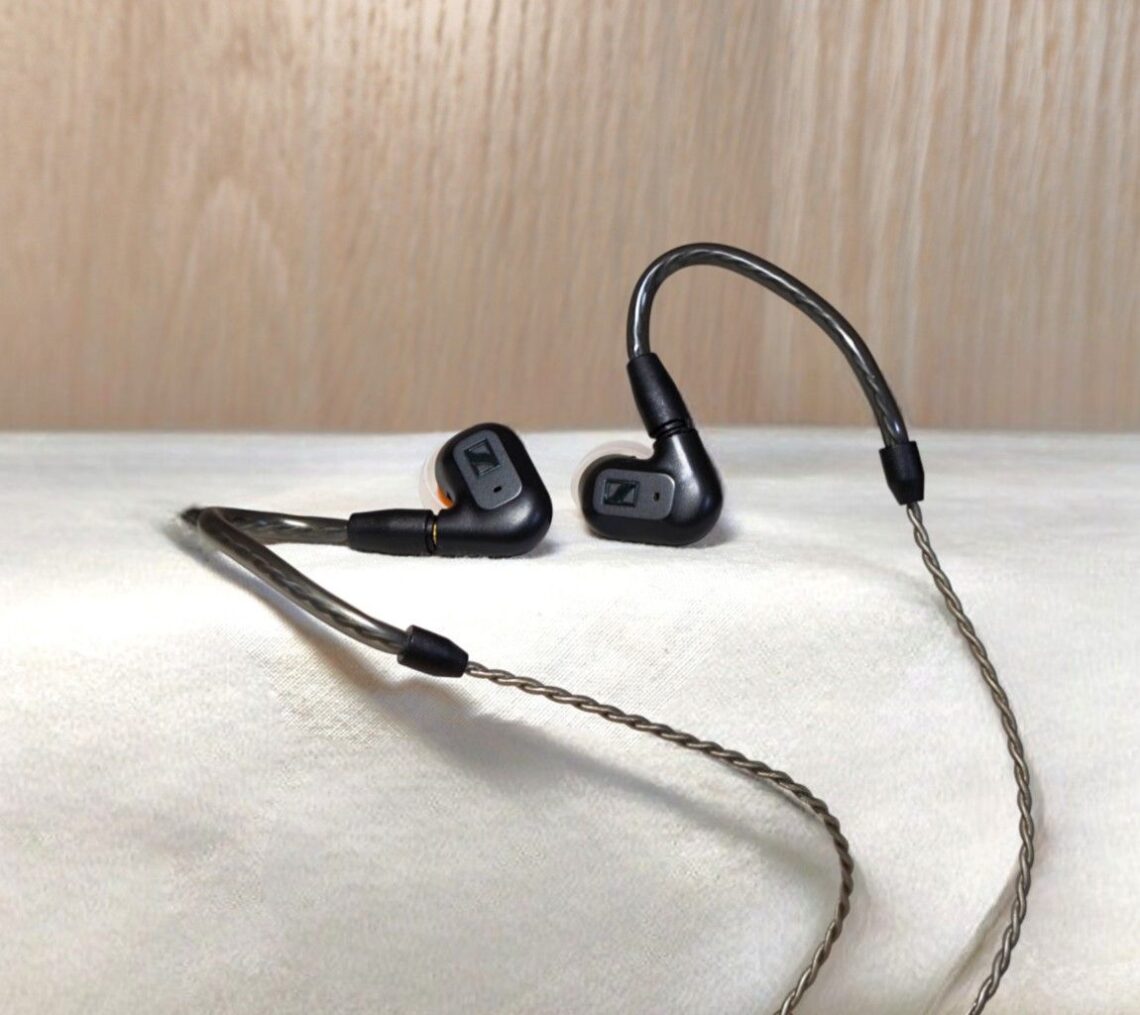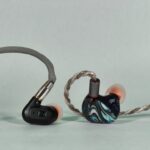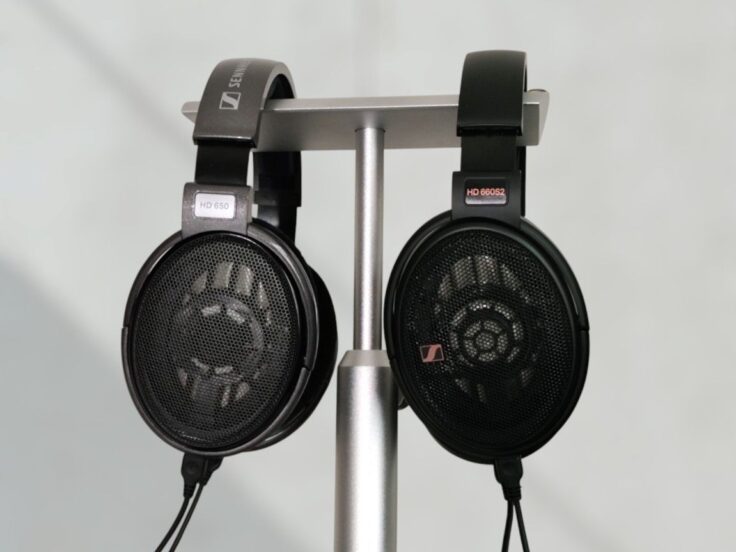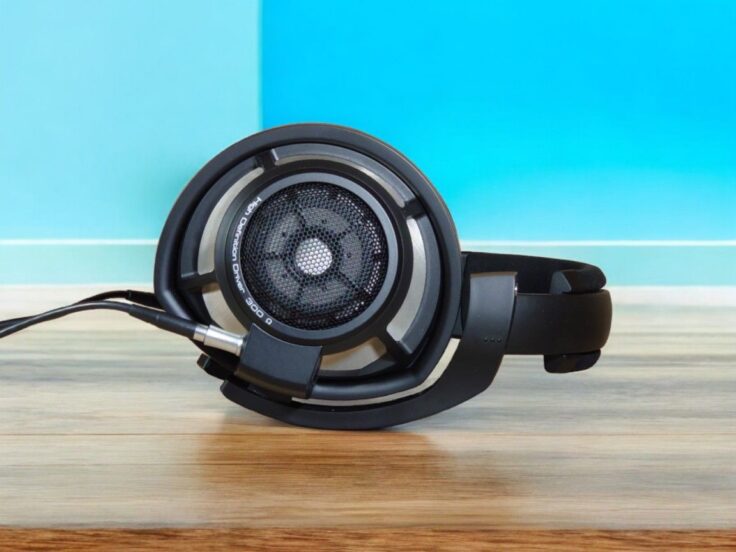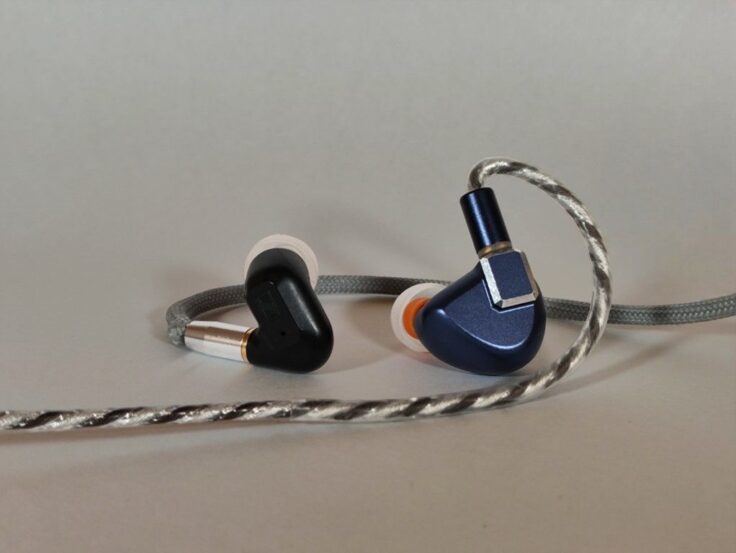The Sennheiser IE200 is among the smallest in-ear monitors available. Despite its compact size and plastic housing, the sound is powerful and detailed, and the tuning is lush and inviting.
Even though being it’s Sennheiser’s least expensive option, the IE200 proudly employs the same 7mm True Response driver as found in its higher-tier models.
Priced very competitively (149 USD MSRP), the IE200 aims to deliver premium sound quality without breaking the bank.
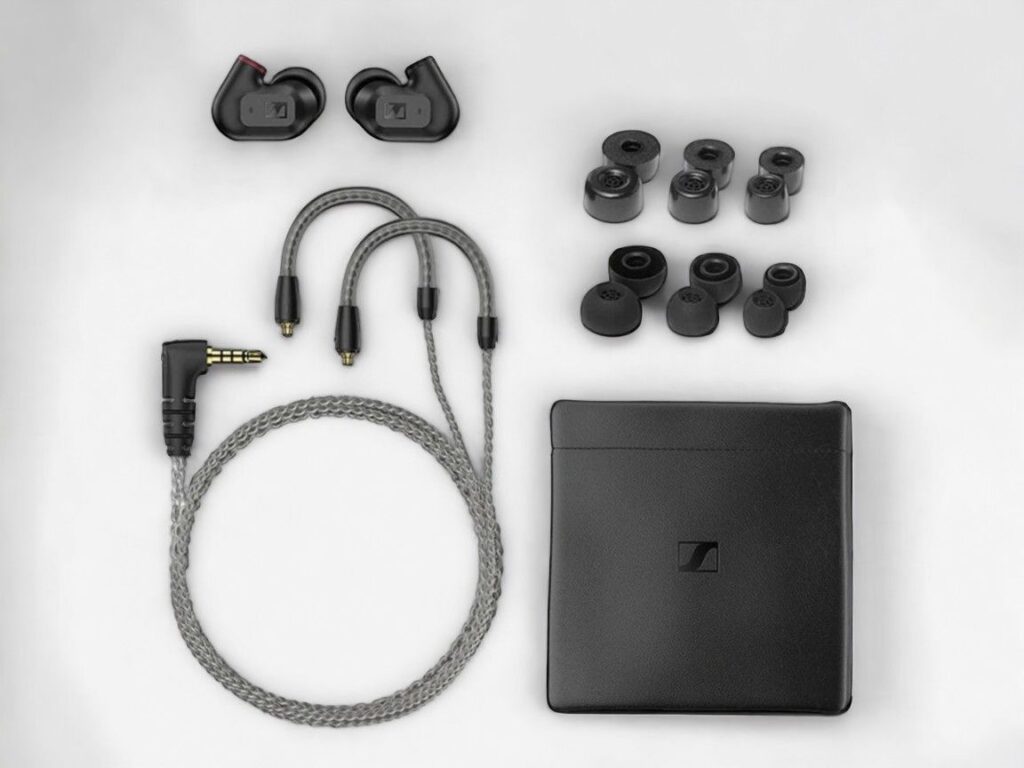
SENNHEISER IE200 SPECIFICATIONS
- Single dynamic 7mm extra-wideband True Response transducer, the same as in the IE 300, IE 600 and IE 900.
- Frequency range: 6 – 26,000 Hz.
- Impedance: 18 Ohm.
- Sound pressure level: 119 dB.
- 1.2 m MMCX cable.
- 3.5 mm stereo mini jack (angled, gold-plated)
- Braided cable with MMCX connectors and 3.5mm plug
- Adjustable ear hooks and choice of ear tip adapters.
Price when reviewed: 99 USD (on sale – MSRP 149 USD)
Price on Amazon: Sennheiser IE200
THE SIBLINGS
As mentioned, Sennheiser does not try to hide that they use the same transducer in the IE200 as in the more expensive models:
“The IE 200 takes advantage of some of the best in-ear technology we have to offer. The 7mm extra-wideband True Response transducer … exhibits virtually no harmonic distortion at all. That’s why you’ll also find it in our IE 300, IE 600 and IE 900.”
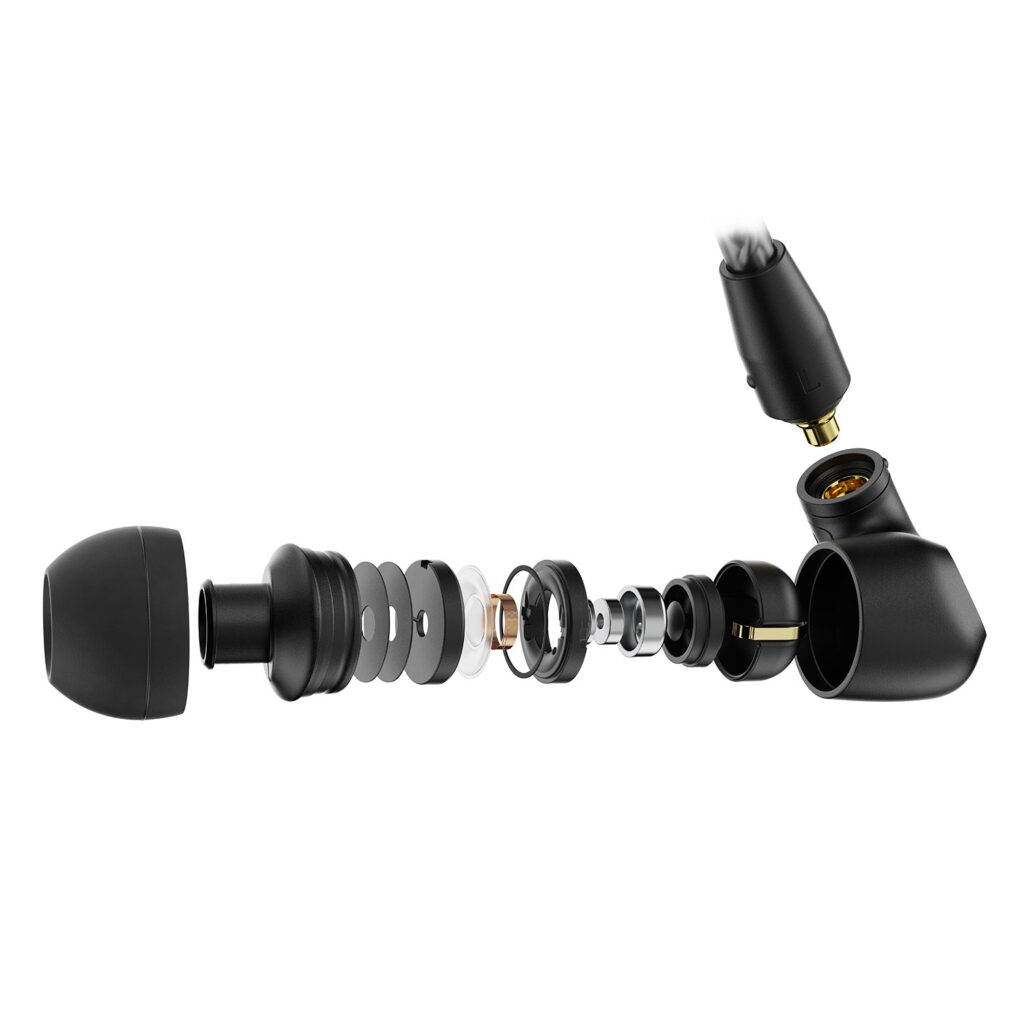
The difference between the four models is mainly the internal acoustic handling and build material. The IE200 comes without any internal acoustic tuning chambers. The IE300 has one, the IE600 two and the IE900 has three built-in chambers. The IE200 and the IE300 are made of plastic, the IE600 and IE900 are made of 3D printed metal alloys. All share the same external form factor, but they come with different cables and accessories.
BUILD AND COMFORT
The IE200 is, as mentioned, made of plastic. The form factor is very compact and the weight is almost nothing. It sits very comfortably in the ear. The semi-custom MMCX cable connectors work well with the stock cable, but are problematic if you want to use third-party cables. However, a sharp, thin-bladed knife is all you need to trim off the plastic ring. I’ve done that with my pair.
The Sennheiser IE200 comes with a thin braided cable which is very light but prone to tangling. There are three sizes of foam tips and silicone tips included along with a simple carrying pouch.
IE200 – TUNING OPTIONS WITH TIPS
The supplied IE200 silicone tips have a unique feature: They are constructed in a way that makes them possible to set in two “positions”, or rather, you can pull the tip out on the nozzle to make it longer, and because the tip has a small inside stopper-rim, it will stay in that position. You can, of course, do that with other tips too, but they are more prone to repositioning themselves. I tried it with my Spintips and it had a similar effect on the sound.
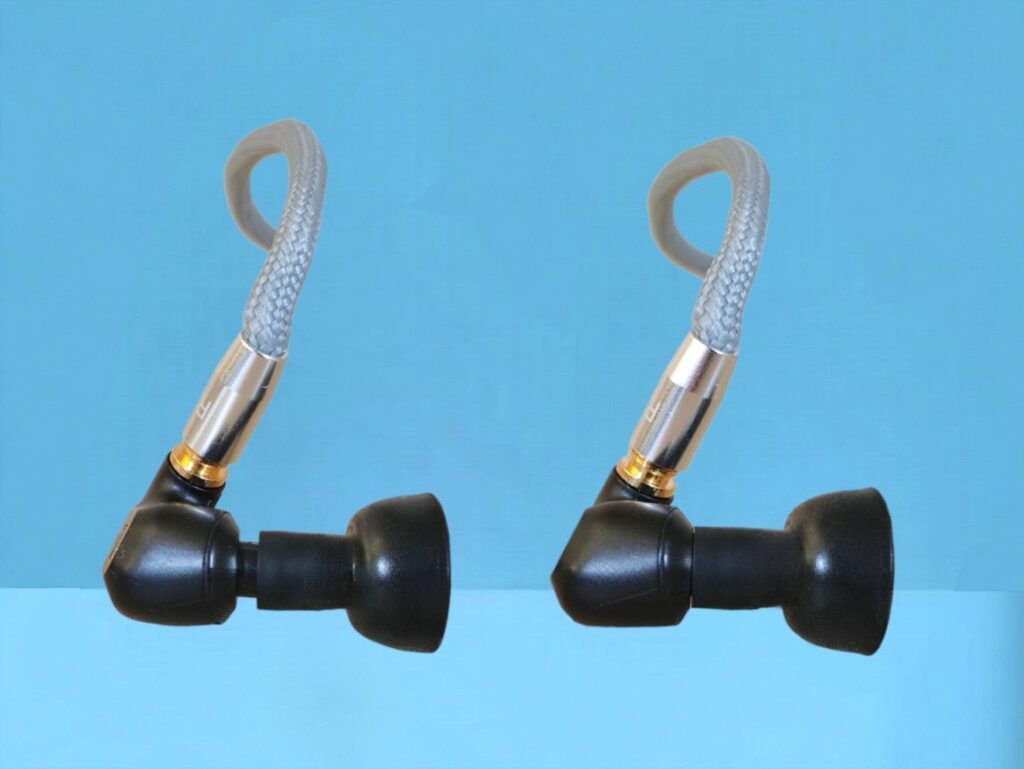
In the shortest (normal) position, the bass will be enhanced, and in the longer (extended) position, it will be reduced. The sound profile is very similar to the IE600 in the shortest (normal) “bass heavy” position.
That being said, for this comparison, I used third-party tips in the normal position. I chose the Spinfit CP100, but CP145 also works. Tips are extremely individual, and I tend to use Spinfit on all IEMs because they fit my ears and give a good seal for me. Everybody has different ears, and finding the right tips that give you a good seal in a comfortable way is the key to making IEMs a good alternative to headphones.
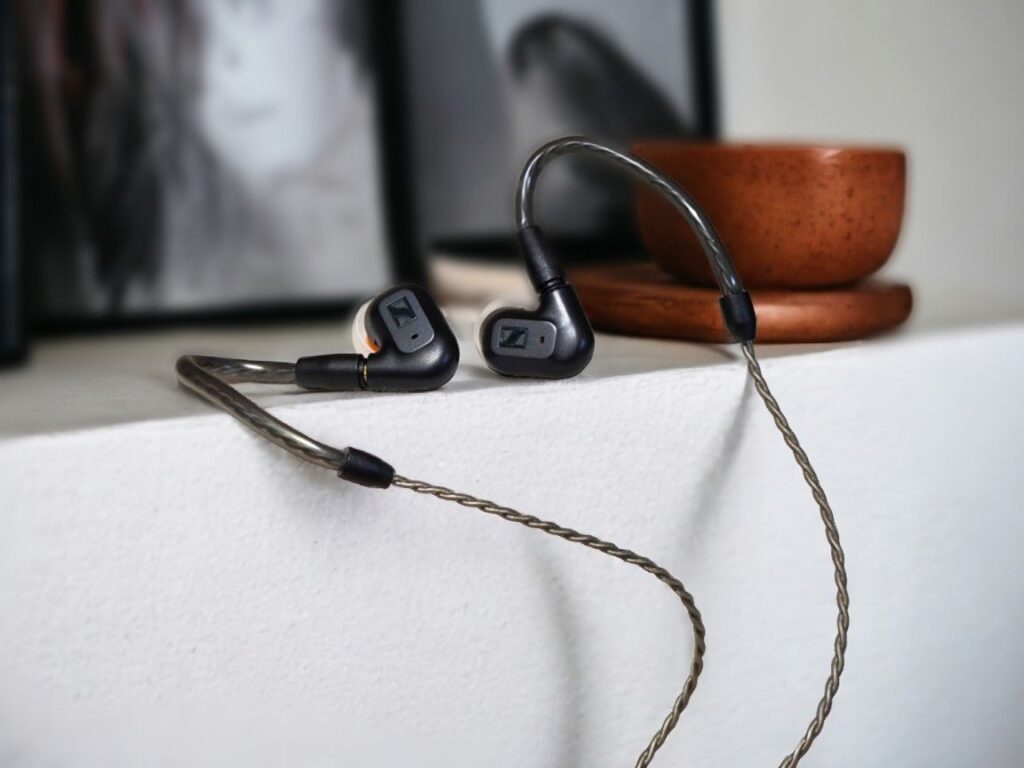
STANDALONE LISTENING IMPRESSIONS
I used the Monolith THX AAA amplifier with the RME ADI-2 DAC FS as a source for this session
Jambi by Tool
This metal track sounds wonderfully powerful and detailed, yet smooth and well-balanced. The vocals are lush but clear, and there is good separation between instruments. The bass is full-bodied, yet tight and textured. There is no harshness to the treble.
Smile by Pearl Jam
The bass is very well separated from the rest and sounds very natural. Instrument separation is generally very good, and the vocals stand out nicely. There’s no issue with sibilance, something this track can induce.
As Before by Olga Konkova
The cajôn drum is very punchy, with deep sounding bass resonances. The piano is clear and has a good, low-end foundation. The female vocals are slightly lush, but textured and detailed sounding.
Almost Like the Blues by Leonard Cohen
Again, the bass is powerful, well defined and nicely separated from the rest. Cohen’s deep vocals are very present and have lots of texture.
Bored by Deftones
The separation of instruments is good, and the guitar has lots of texture. However, the IE200 can sound a bit dry and I find it lacks a bit of tonal weight and body in the mids.
Desert Island Disk by Radiohead
The guitar is crisp and warm sounding. The pulsing bass beat is nicely balanced with good definition. Thom Yorke’s vocals are very intimate, with lots of detail and nuance.
Richter: Summer 3, Vivaldi Recomposed
The strings sound very energetic, and there is good separation between the instruments with a good sense of reverberation and space. When the standing basses enter, they sound full and deep without overpowering anything.
It Could be Sweet by Portishead
The bass is very powerful and I would not want it to be any stronger. Yet, it still has plenty of definition and does not sound bloomy. The female vocals are delicate, velvety and nuanced.
Young Vivaldi RV 813 III by Ensemble Modo Antiquo
The strings have bite and attack, but are also slightly velvet-like in the mids. It’s a very enjoyable and soothing listen.
COMPARISONS
I used desktop amps for my comparison, mostly the neutral sounding Monolith THX AAA 887 Amp or the Topping A90 amp. I used the RME ADI-2 DAC FS as a source.
KIWI EARS ORCHESTRA LITE vs IE200
Starting with the 8-driver Orchestra Lite, usually priced around 250 USD. They sound very different, and the twice as expensive Kiwi Ears is certainly technically better.
In terms of sound signature, the Orchestra Lite is crisper and brighter, the IE200 is darker and lusher – especially in the mids and bass. The soundstage is bigger with the Orchestra Lite. It is generally also more dynamic and detailed.
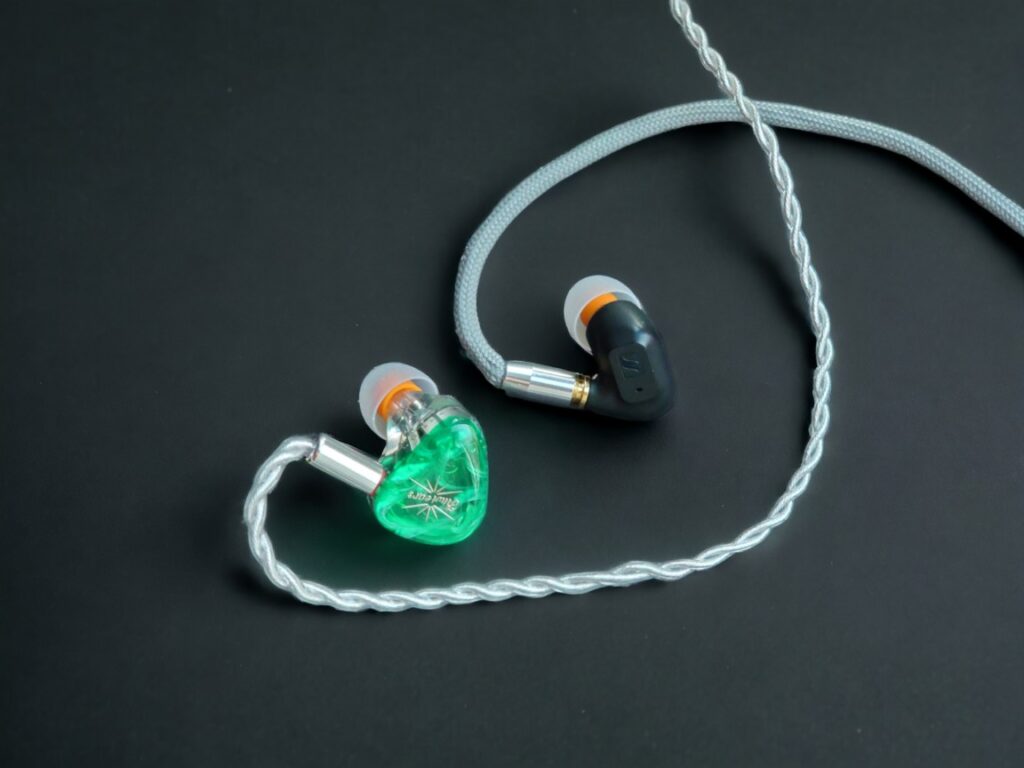
The treble is clearer and more articulate with the Orchestra Lite, it’s relatively more laid-back with the IE200 – although it can become quite crisp sometimes too.
The midrange is warmer, thicker and sweeter with the IE200, while it’s clearer and a little brighter with the Orchestra Lite. The bass has more quantity with the IE200, while it’s tighter with the Orchestra Lite.
Both of them sound quite natural and organic, but in different ways. They have different but nice timbre. All in all, the Orchestra Lite is more neutral and technically better. The IE200 has some extra smoothness and warmth. These are both great IEMs, albeit with different characters – and with a different price.
Full Comparison here
- Buy on Linsoul: Kiwi Orchestra Lite
- Buy on Amazon: Kiwi Ears Orchestra Lite
KIWI EARS QUINTET vs IE200
First of all, both these IEMs are great sounding devices, they’re both among my favorites in their price range. The 220 USD Quintet is a bit pricier than the IE200, but it’s worth it.
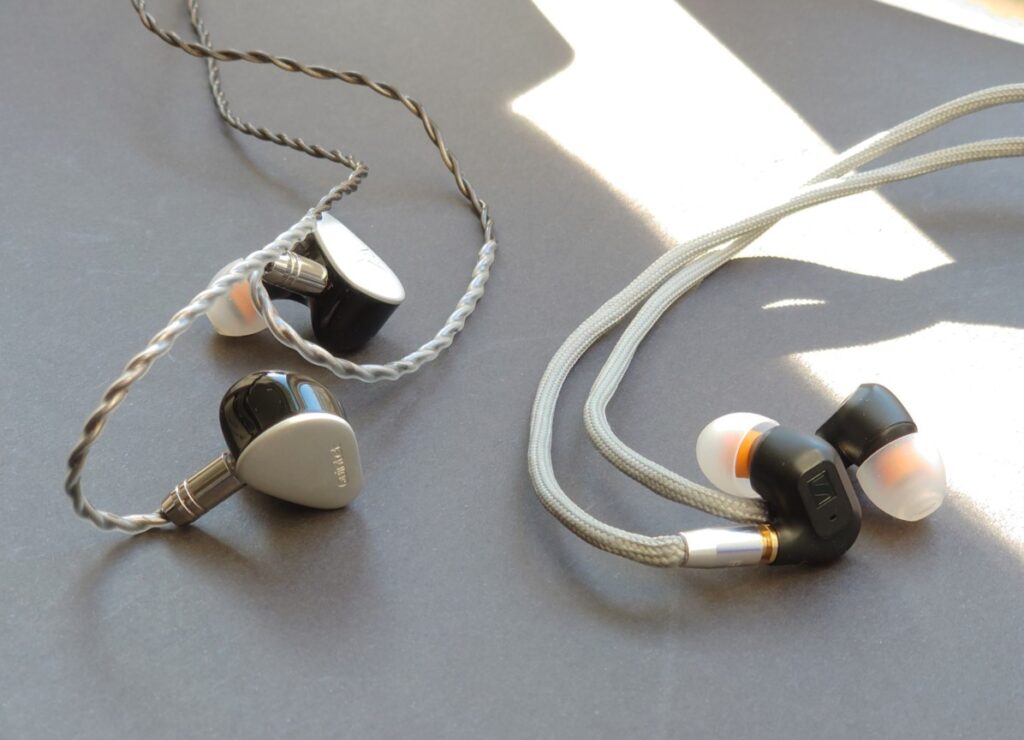
In terms of build and comfort, they are both very light and small, but the IE200 is the smallest. I do prefer the 2-pin connector of the Quintet to the semi-proprietary MMCX, though. I also like the supplied cable of the Quintet better.
When it comes to soundstage, the Quintet is more open-sounding with better imaging. It is also more dynamic, The IE200 is still good in these aspects, though. The detail level is in general higher with the Quintet, but the IE200 is no slouch.
The treble is, for the most part, more laid-back with the IE200, while it has more consistent energy and articulation with the Quintet. The mid-range of the IE200 is on the warmer and thicker side, mostly in a very seductive way. The Quintet also has a great midrange, but it’s more neutral and offers better definition. The bass is tighter with the Quintet, with more texture and control.
Full Comparison here
- Buy on Linsoul: Kiwi Quintet
- Buy on Amazon: Kiwi Quintet
SIMGOT EA1000 vs IE200
The 220 USD EA1000, with its golden brass tuning nozzles installed, offers a balanced sound signature and a very organic presentation. It excels in providing a fuller, warmer sound with more tonal weight and body compared to the IE200.
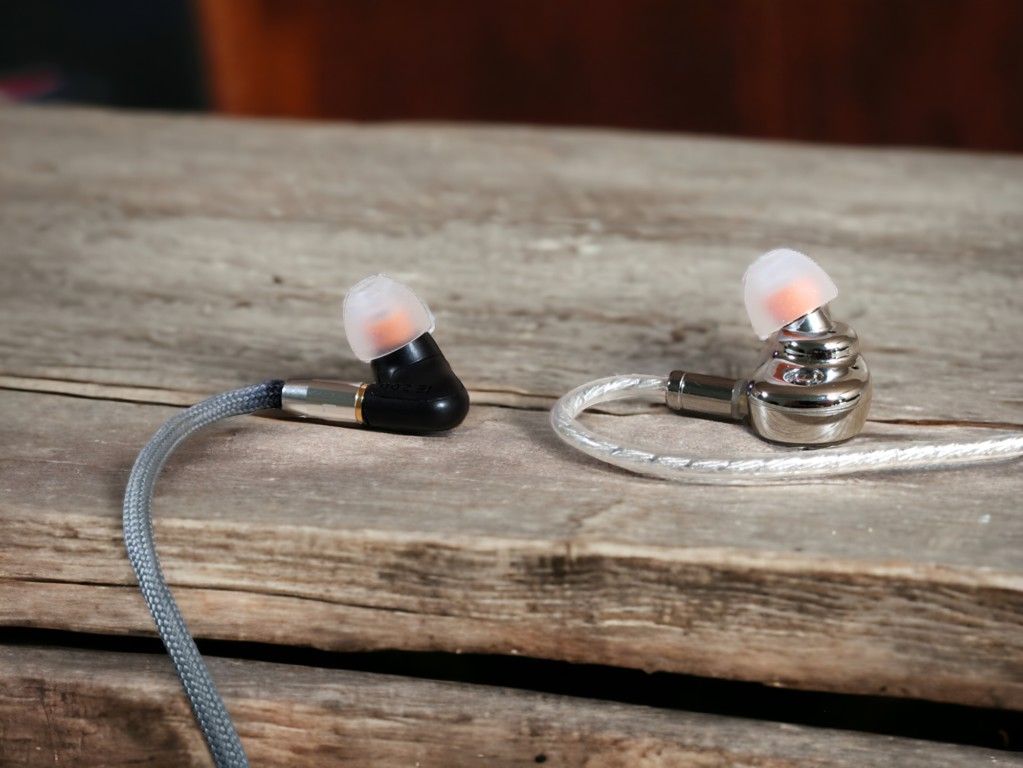
In terms of treble, the IE200 offers a mostly smooth, clear and crisp delivery, which however sometimes gets too hot; it may border on sibilance in certain tracks. The EA1000 delivers a more consistently well rounded, liquid and effortless treble.
The EA1000 boasts a fuller midrange, with more presence in the upper mids, the IE200 has a darker sounding midrange with more presence in the lower than upper midrange frequencies, which results in a more velvety delivery. Which sounds best varies a lot from track to track.
Both earphones provide good bass quantity and quality. While the IE200 offers the widest soundstage and precise imaging, the EA1000 provides excellent instrument separation and layering with more tonal weight.
The EA1000 presents a smoother, rounder sound with excellent detail retrieval in a liquid and organic manner, the IE200 has that crispness in the treble that can make detail feel more pronounced but less nuanced.
Both earphones deliver dynamic sound, with the IE200 exhibiting slightly more contrast, that will also vary from track to track.
Full Comparison here
- Buy on Linsoul: Simgot EA1000
- Buy on Amazon: Simgot EA1000
MOONDROP KATO vs IE200
Moondrop Kato has become a reference for many. It’s normally priced slightly higher than the IE200.
The IE200 and Kato have distinctly different sound signatures. The IE200 is more V-shaped, emphasizing lower bass and highs, while the Kato has more mid-bass and midrange, with a polite high end. The IE200’s treble is crisper and more upfront, while the Kato’s is smoother and more relaxed. The Kato’s midrange is smooth and organic with more presence, while the IE200’s is drier but clearer and crisper. The IE200 has a more present sub-bass, while the Kato’s mid-bass can make it sound fuller. Both have wide soundstages, but the IE200 often has slightly better imaging due to more space between instruments. They are both dynamic and detailed, with the IE200 being more articulate in micro-dynamics and having a crispier texture, while the Kato is smoother overall.
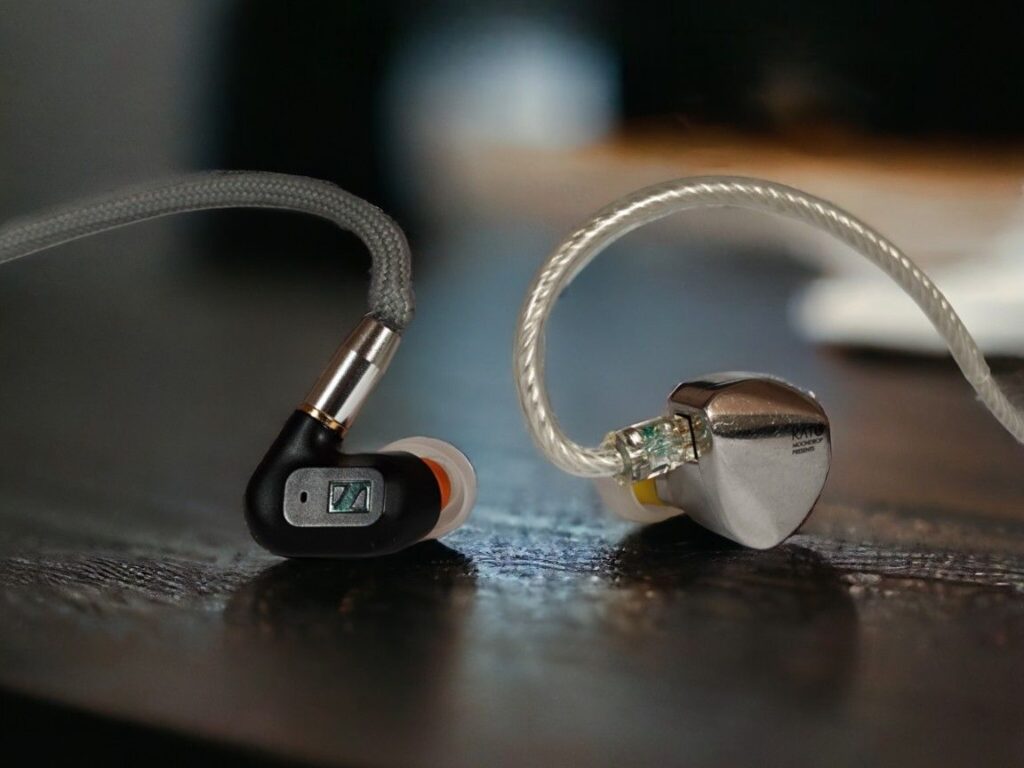
Full Comparison here
- Buy on Linsoul: Moondrop Kato
- Buy on Amazon: Moondrop Kato
SIMGOT EM6L vs IE200
The EM6L is a multi-driver IEM, usually priced a bit below the IE200.
Starting with the strong point of the EM6L; with regards to imaging, there is no contest. The IE200 is good, but the EM6L is better. It also has better dynamics, and is generally tighter, crisper, and snappier. The bass, especially, has better definition.
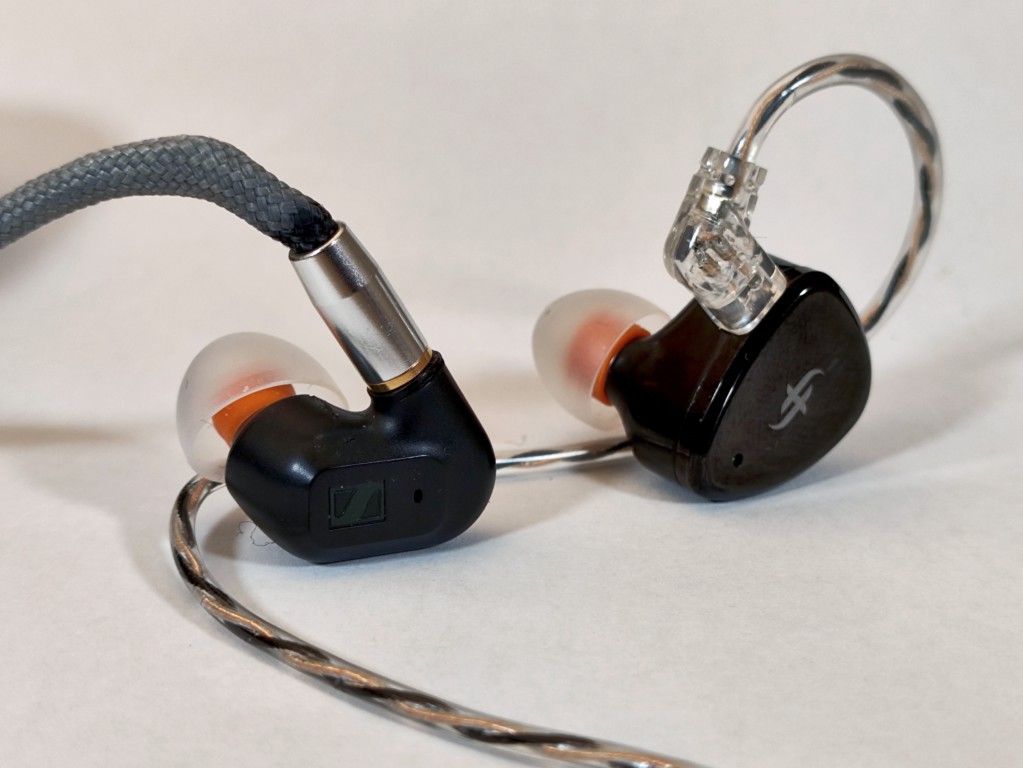
What the IE200 offers instead is a relatively smoother, and I would say, more musical and organic presentation. It has a more present mid-range and sounds warmer. I would pick the EM6L for gaming and select genres where bass, percussion and imaging are especially important, and the IE200 for general music listening.
Simgot EM6L Review here
- Buy on Amazon: Simgot EM6L
- Buy on Linsoul: Simgot EM6L
LETSHUOER x GIZAUDIO GALILEO vs IE200
The Letshuoer Galileo and the Sennheiser IE200 offer different sound signatures, catering to different preferences. They’re roughly in the same price range.
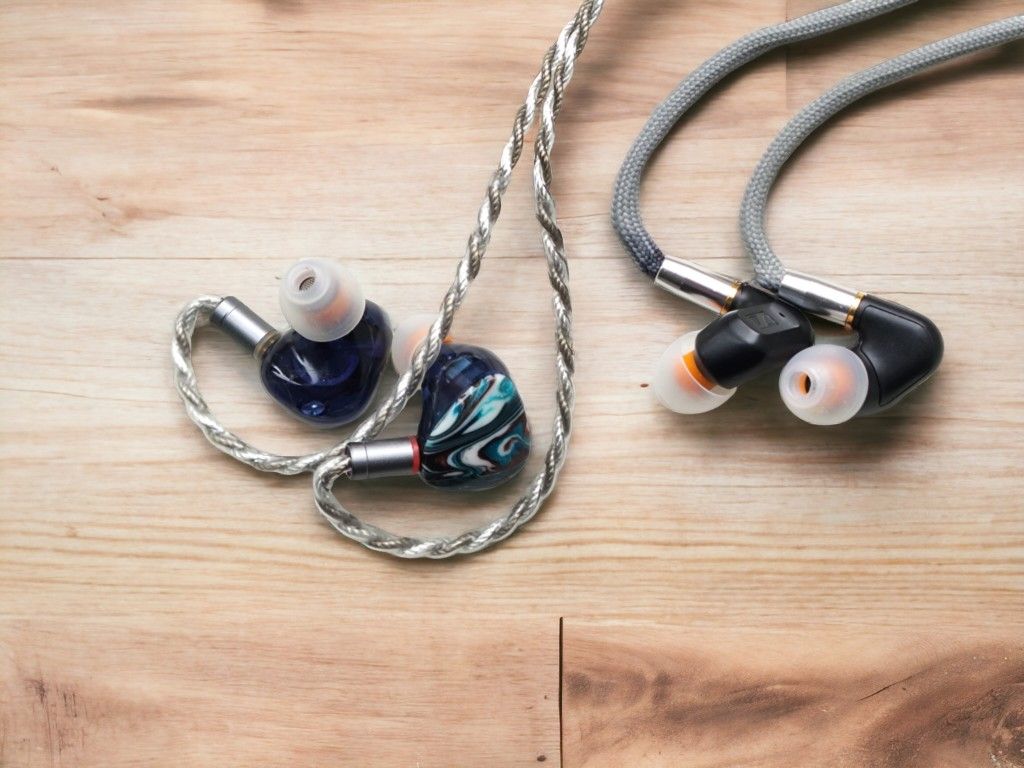
The Galileo delivers a neutral tonality and natural timbre, presenting a shockingly well-balanced and nuanced sound. In contrast, the Sennheiser IE200 offers a more colored sound with darker mids and heavier bass, while still maintaining a crisp and clear treble. Sounding lusher and warmer, it does lose some finer detail in direct comparison with the impressive Galileo.
Letshuoer x Gizaudio Galileo review and detailed comparison coming here
LETSHUOER S12 PRO vs IE200
Priced relatively similar, both are single driver IEMs, however, while the IE200 features a modest 7mm dynamic driver, the S12 PRO boasts a huge14.8mm planar magnetic driver. They share elevated bass and highs, but otherwise differ significantly in sound.
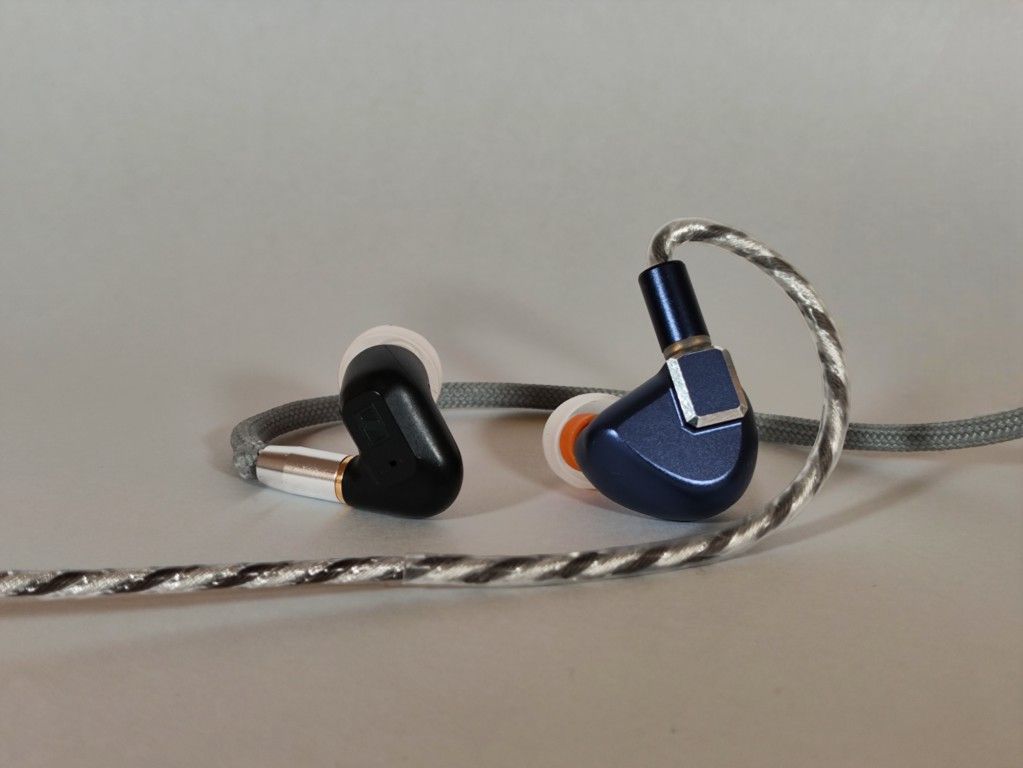
The IE200 features smoother treble, while the S12 PRO is crisper and more prone to sibilance. In the midrange, the IE200 offers a velvety tone, contrasting with the S12 PRO’s crisper, textured midrange. While the IE200 boasts powerful bass, the S12 PRO delivers tighter bass with more detail.
Both offer similar soundstage and imaging, with the S12 PRO feeling slightly more open and precise. In terms of detail, the S12 PRO excels in microdynamics, while the IE200 presents detail in a smoother, refined manner.
S12 PRO review here
SENNHEISER IE600 vs IE200
The IE600 has a bit more bass and treble energy. Often it feels slightly more detailed. However, sometimes it is the other way around. Most of all these two earphones are remarkably similar. They both have plenty of bass, an intimate but still quite open soundstage, detailed and warmish mid-range and nice treble resolution without too much brightness.
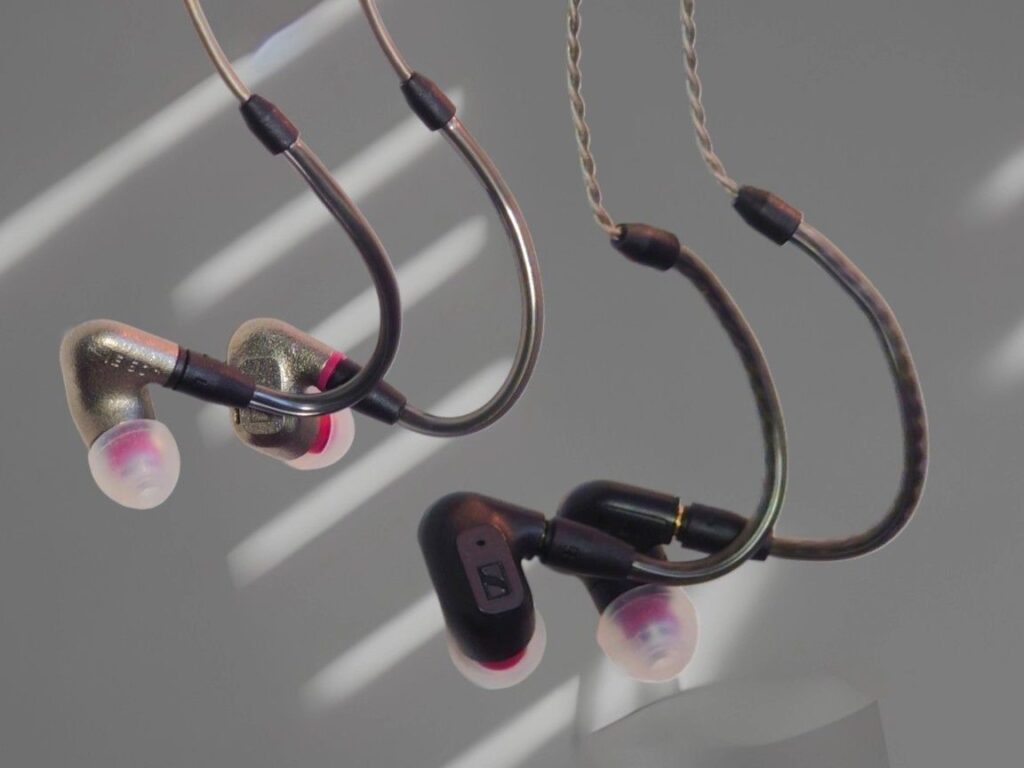
The sound is so similar that it makes perfect sense that both use the same driver. As mentioned, the sound differences are due to the housing differences alone.
Since the IE600 has two resonance chambers, I think that whether or not you find these two earphones significantly different depends a lot on the music you listen to. Resonance chambers only affect certain frequencies and if the music you listen to doesn’t have much of those frequencies in it, you will not get very much benefit from those resonance chambers.
Sound-wise, the plastic IE200 is a bargain, at least compared to the IE600: The price difference between the IE200 and the IE600 is not reflected in the sound quality – by far.
(At least as far as I can tell, using my preferred identical CP100 Spintips, my ears and on my setup)
Full Comparison here
Buy on Amazon: Sennheiser IE600
AMPLIFICATION
IE200 requires some power; it just barely reaches decent listening level with Jambi by Tool driving it with my POCO F5’s headphone jack at full volume.
DESKTOP AMPS
As an all-in-one DAC/amp, the RME ADI-2 DAC FS is superb. With regards to dedicated desktop solid-state amps, I tried the following: The Monolith THX AAA 887 and Topping A90 work excellently with the IE200, and I ended up using them for my IEM comparisons. They sound spacious, detailed, and neutral.
Further, the Schiit Magni Heretic is good. The Rebel Amp also sounds great. The Fiio K5 PRO is a good option (it also has a decent DAC), even if it was as tight as the other desktop amps, it was better than all the USB-dongles.
DONGLES
The Audioquest Red, Cobalt and THX Onyx USB dongles all sound good, although the bass is tighter with the desktop amplifiers like the Monolith THX AAA 887.
The Fiio K3 and xDuuo Bal2 sounded underpowered, both with the unbalanced and balanced output. The bass was bloomy, loose, and lacked precision, the soundstage was small and dense, instrument separation and detail suffered.
In conclusion, the IE200 demands a relatively high amount of power as well as a quality DAC to sound its best.
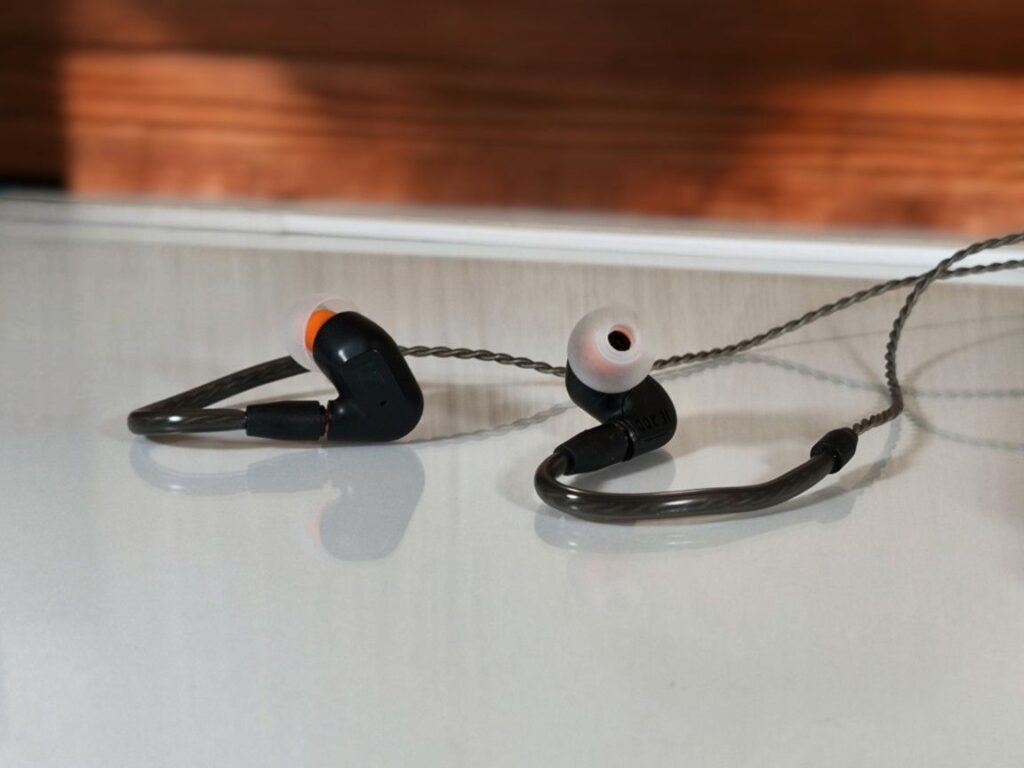
WRAPPING IT UP
Sound Signature
The IE200 is an IEM with a noticeably elevated bass, mellow mids, and elevated but mostly smooth highs. It comes off as lush, smooth, and warm sounding in the bass and mids, with a treble that is relatively bright, but seldom offensive.
Treble
The treble mostly sounds clear, smooth and delicate. However, it’s a bit uneven. Sometimes it becomes too bright and sibilant. It depends on the frequencies in the music you listen to. This is one of the core differences between the IE200 and the IE600. The latter has a different housing with two resonance chambers that contributed to a less uneven treble.
Midrange
The midrange sounds a bit dark, lush and mellow, with less energy in the upper mids. Even though it has less presence than the bass and treble, it doesn’t feel recessed. There are more mid-centric IEMs available, but I really like the IE200’s tuning a lot.
Bass
The bass is powerful and goes deep. Even though it has good definition but still is not the tightest I’ve heard, but it definitely is full-bodied and satisfying. It doesn’t bleed much into the mids and seldom feels boomy.
Soundstage and Imaging
The soundstage is not huge, nor is it especially narrow. The imaging is good but not spectacular.
Detail, Dynamics and Timbre
The detail level is good, but not stellar. Dynamics are better in the bass and treble then in the mids. The midrange timbre is on the dark side of neutral, the bass is fuller sounding, the treble varies from smooth to crisp.
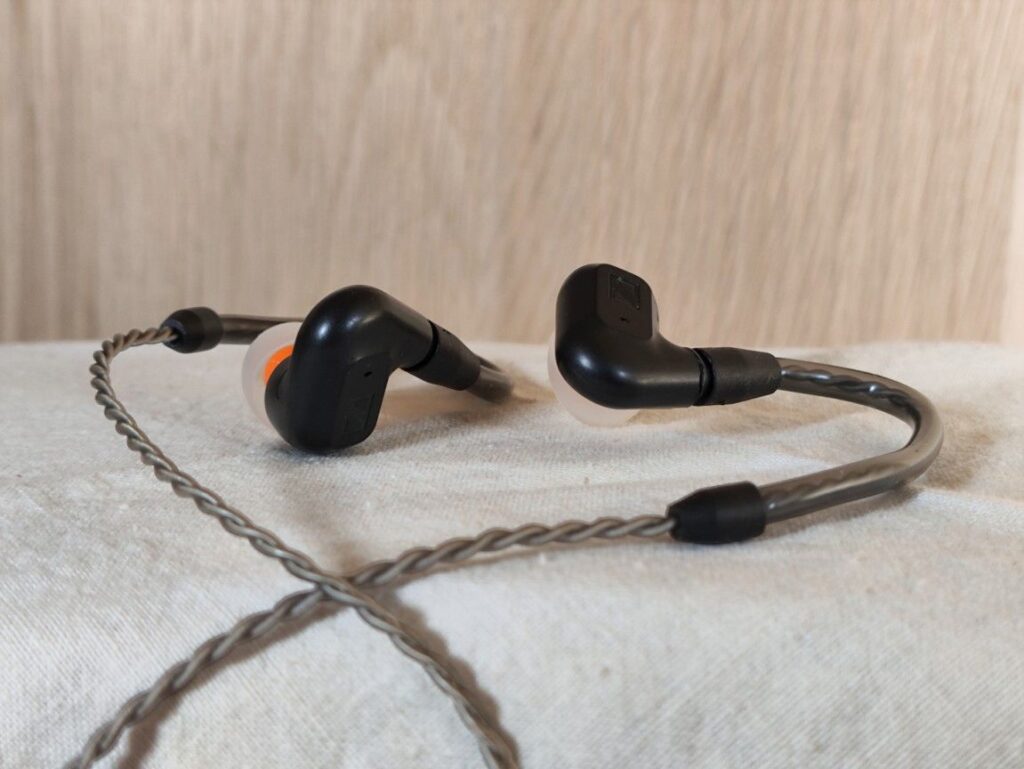
CONCLUSION
In conclusion, the Sennheiser IE200 is an excellent IEM for the price. It offers a lush, warm sound signature with elevated bass, mellow midrange, and clear highs.
Despite its minor weaknesses, such as the occasional uneven treble and modest soundstage, the IE200 impresses with its powerful yet controlled bass, lush and nuanced midrange, and an overall musical and immersive presentation.
The IE200 offers a big sound in a very small package. The competition at this price point is quite fierce, but if this is the sound you are after, the IE200 is a great option.
Buy on Amazon: Sennheiser IE200
Any purchase you make on Amazon or Linsoul with any of our affiliate links will give us a small provision at no cost to you.
We only get a provision for items that are not returned, so there’s no incentive for us to recommend something that’s not good.
Linsoul : Headphones, Earbuds, Wireless Earbuds, Desktop DAC/AMP, Portable DAC/AMP, Digital Audio Players,
Amazon: Headphones, IEMs, Headphone Amplifiers, Home Audio or Anything else.
.
If you enjoyed this article or other content on The Headphoneer, you might consider leaving a small donation to keep this website up and running. No donation is too small. Thanks for supporting us!
If you like our work please follow us on Instagram, Facebook and Twitter , it will help us grow. Sharing is caring 🙂


